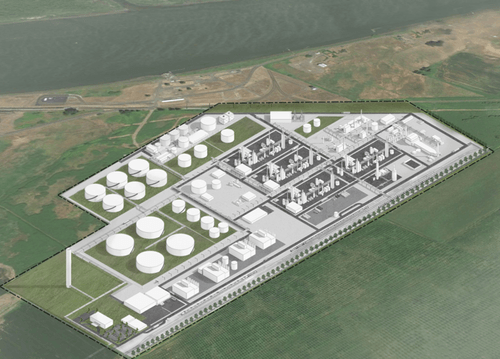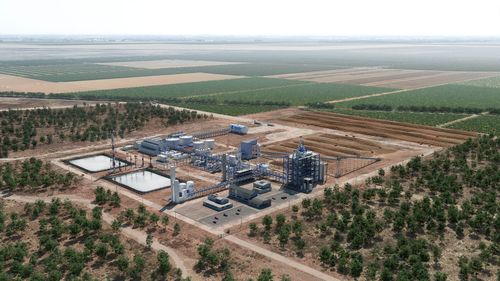NREL has published a report of the current state of the SAF industry, aiming to identify weak links in the supply chain that could hinder the production of SAF in reaching goals set under the SAF Grand Challenge.
The SAF industry is positioned as a critical component in reducing the greenhouse gas (GHG) emissions of the aviation sector, which accounts for 10% of domestic transportation emissions and 3% of total U.S. GHG emissions. With air transportation expected to double by 2050, SAF emerges as the primary solution to decarbonize medium- and long-haul flights, where electrification and hydrogen technologies face significant technical challenges.
The SAF Grand Challenge is a U.S. government initiative to stimulate the SAF industry’s growth. The goal is to increase SAF production to 3 billion gallons per year (BGPY) by 2030 and 35 BGPY by 2050, achieving at least a 50% reduction in life cycle GHG emissions compared to fossil jet fuel. This ambitious target requires a 130-fold increase in production by 2030 and requires substantial financial investments, technological advancements, and policy support.
The report highlights several key SAF production pathways, including hydroprocessed esters and fatty acids (HEFA), Fischer–Tropsch (FT), alcohol-to-jet (ATJ), and potentially pyrolysis-to-jet (PTJ). The HEFA pathway is expected to be the primary contributor to the 2030 goals, leveraging existing technologies and infrastructure.
Key takeaways from the report include the following:
- Both SAF and renewable diesel (RD) are necessary to decarbonize transportation. RD supports the decarbonization of medium- and heavy-duty vehicles, and SAF enables the decarbonization of medium- and long-distance commercial aviation.
- The demand for SAF is expected to increase because there are no alternative fueling options for medium- to long-haul commercial aviation. Although there is likely to be strong demand for RD in the medium-term, long-term demand for RD will likely decrease because of electrification and hydrogen fueling options for medium- and heav-yduty vehicles. Increasing production volumes of RD in the near term has the benefit of developing production/logistics infrastructure and improving fuel producers’ skills in maintaining quality, problem-solving, efficiency, and cost reduction, as the technologies for RD and SAF are similar. The growth of the SAF market will be positively impacted by all of these learnings.
- In the present market and incentive structure, RD competes with SAF because they have mostly similar process configuration, carbon numbers, and boiling points. At the time of publication, the combined incentives in some states will slightly favor RD production (federal and California State1 incentives). As evidence of the impact of incentives, only 8 million gallons of SAF were sold in California in 2021, which made up 0.3% of the total Low Carbon Fuel Standard (LCFS) credits sold. In contrast, 941 million gallons of RD were produced in the same year, accounting for 36% of the total LCFS credits. The structure of the combined federal and state incentives for California (CA) indicates that RD currently has a slight advantage over SAF when carbon intensity (CI) values are equal. This advantage is mainly due to the extra $0.39 allocated to RD based on California avoided diesel deficit. In the absence of California avoided diesel deficits, the federal and California LCFS incentives favor SAF for 2023– 2024 and 2024–2027, when emissions reductions exceed 60%. While current policy and market conditions may incentivize biofuel facilities to favor RD production, these same facilities could be used with some modifications to increase SAF production and support the Federal government’s SAF production goals as the market for SAF grows.
- Effective and durable policy incentives are required for SAF production and encourage the growth and establishment of a SAF industry while ideally providing low-carbon jet fuel to customers at costs comparable to fossil Jet A. Stakeholders emphasized the necessity of long-term durability of SAF policies because capital investments are large, with project lifetimes exceeding 10 years. One major concern has been the frequent expiration and reinstatement of tax credits, as well as the consistency of these incentives.
- Establishing a global consensus on the definition and eligibility criteria for SAF is important because airlines will use SAF produced on international routes and will thus be subject to other countries’ regulations. Most of the feedstocks identified in the Billion-Ton Report [3], such as grains, oilseeds, animal fats, and forestry wastes, can comply with the SAF Grand Challenge’s 50% GHG emissions reduction requirement and the Commercial Aviation Alternative Fuels Initiative (CAAFI) definition of SAF [4] and may also be compliant with the International Civil Aviation Organization (ICAO) definition of SAF [5].
- Feedstock availability may be a high risk in a supply chain because it embodies multiple risks that may compound and that are beyond the control of a SAF producer. Compounding factors for certain biomass feedstock may include seasonality, pests, diseases, climate and weather, market demand, global trade and regulations, and labor. Some of this risk may be mitigated by conversion processes that have the flexibility to accept multiple, more diverse feedstock. However, project financiers typically require long-term supply agreements with credit-worthy counterparties. The challenge lies in the fact that, despite the availability of feedstock, the project may still not meet the necessary de-risk criteria—because of the factors mentioned above—to qualify for project financing. One way this feedstock risk may be mitigated is to have feedstock suppliers also become investors in SAF projects.
- For the HEFA pathway, there is a significant overlap between jet and diesel hydrocarbon fractions. Although overlap between jet and diesel fractions will allow producers the flexibility to choose which product to make, production of additional jet fuel from the diesel fraction may require additional capital expense, increase operating costs, require additional hydrogen and higher-severity operations, and reduce carbon yield to the desired product. Simple extraction of the jet fraction (approximate carbon number [C] 8 to 16) via distillation will result in the remaining diesel fraction (carbon number > 16) being too heavy (high pour point) to be used in the diesel market; however, this heavy fraction may be suitable for heavy fuel oil displacement in the marine fuel market. While the government has established SAF production as a priority, producing renewable diesel and/or marine fuel also contributes to decarbonizing the transportation sector. For the ATJ pathway, where smaller molecules are “built up” or oligomerized to make larger molecules, it may be possible to produce fuel molecules in the C8 to C16 range without having to produce larger molecules.







